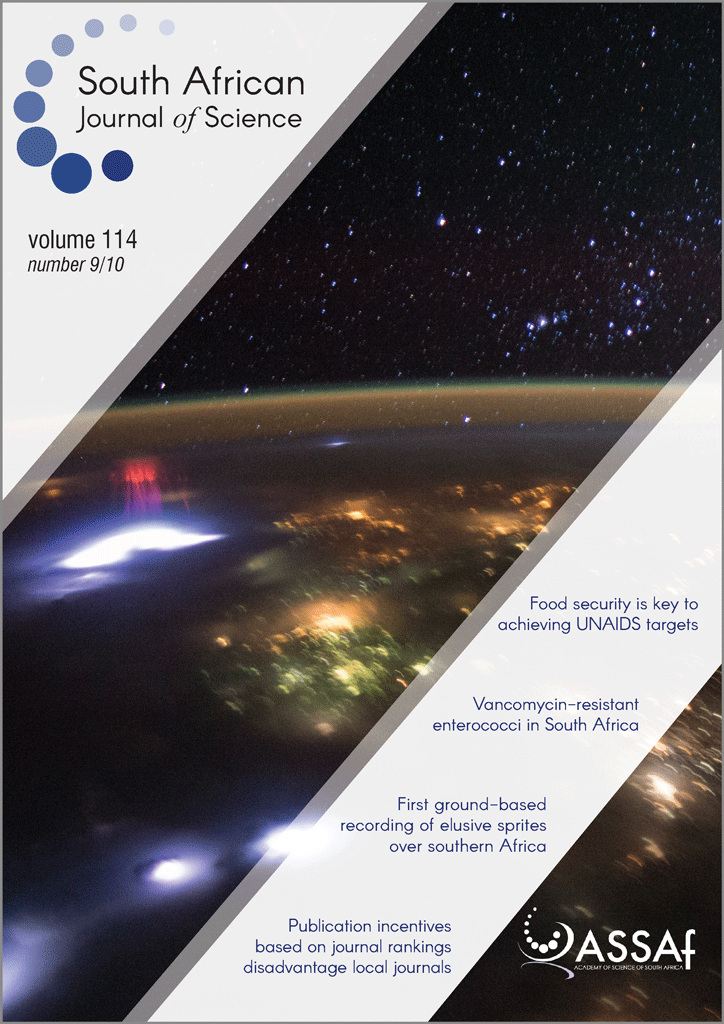Mapping chlorophyll-a concentrations in a cyanobacteria- and algae-impacted Vaal Dam using Landsat 8 OLI data
DOI:
https://doi.org/10.17159/sajs.2018/4841Keywords:
chlorophyll-a, Landsat 8, Vaal Dam, water qualityAbstract
Mapping chlorophyll-a (chl-a) is crucial for water quality management in turbid and productive case II water bodies, which are largely influenced by suspended sediment and phytoplankton. Recent developments in remote sensing technology offer new avenues for water quality assessment and chl-a detection for inland water bodies. In this study, the red to near-infrared (NIR-red) bands were tested for the Vaal Dam in South Africa to classify chl-a concentrations using Landsat 8 Operational Land Imager (OLI) data for 2014–2016 by means of stepwise logistic regression (SLR). The moderate-resolution imaging spectroradiometer (MODIS) data were also used for validating chl-a concentration classes. The chl-a concentrations were classified into low and high concentrations. The SLR applied on 2014 images yielded an overall accuracy of 80% and kappa coefficient (κ) of 0.74 on April 2014 data, while an overall accuracy of 65% and κ=0.30 were obtained for the May 2015 Landsat data. There was a significant (p<0.05) negative correlation between chl-a classes and red band in all analyses, while the NIR band showed a positive correlation (0.0001; p<0.89) for April 2014 data set. The 2015 image classification yielded an overall accuracy of 83% and κ=0.43. The difference vegetation index showed a significant (p<0.003) positive correlation with chl-a concentrations for May 2015 and July 2016, with chl-a ranges of between 2.5 μg/L and 1219 μg/L. These correlations show that a class increase in chl-a (from low to high) is in response to an increase in greenness within the Vaal Dam. We have demonstrated the applicability of Landsat 8 OLI data for inland water quality assessment.
Significance:
- The magnitude of the algae problem in the Vaal Dam is highlighted.
- Landsat 8 OLI satellite data have potential in mapping chl-a in inland water bodies.
- Both the red and the near infrared wavelengths were significant in mapping chl-a concentrations in the Vaal Dam.
- Satellite earth observation can be instrumental for water quality monitoring and decision making.
Published
Issue
Section
License

All articles are published under a Creative Commons Attribution 4.0 International Licence
Copyright is retained by the authors. Readers are welcome to reproduce, share and adapt the content without permission provided the source is attributed.
Disclaimer: The publisher and editors accept no responsibility for statements made by the authors
How to Cite
- Abstract 1902
- PDF 1148
- EPUB 237
- XML 433












.png)